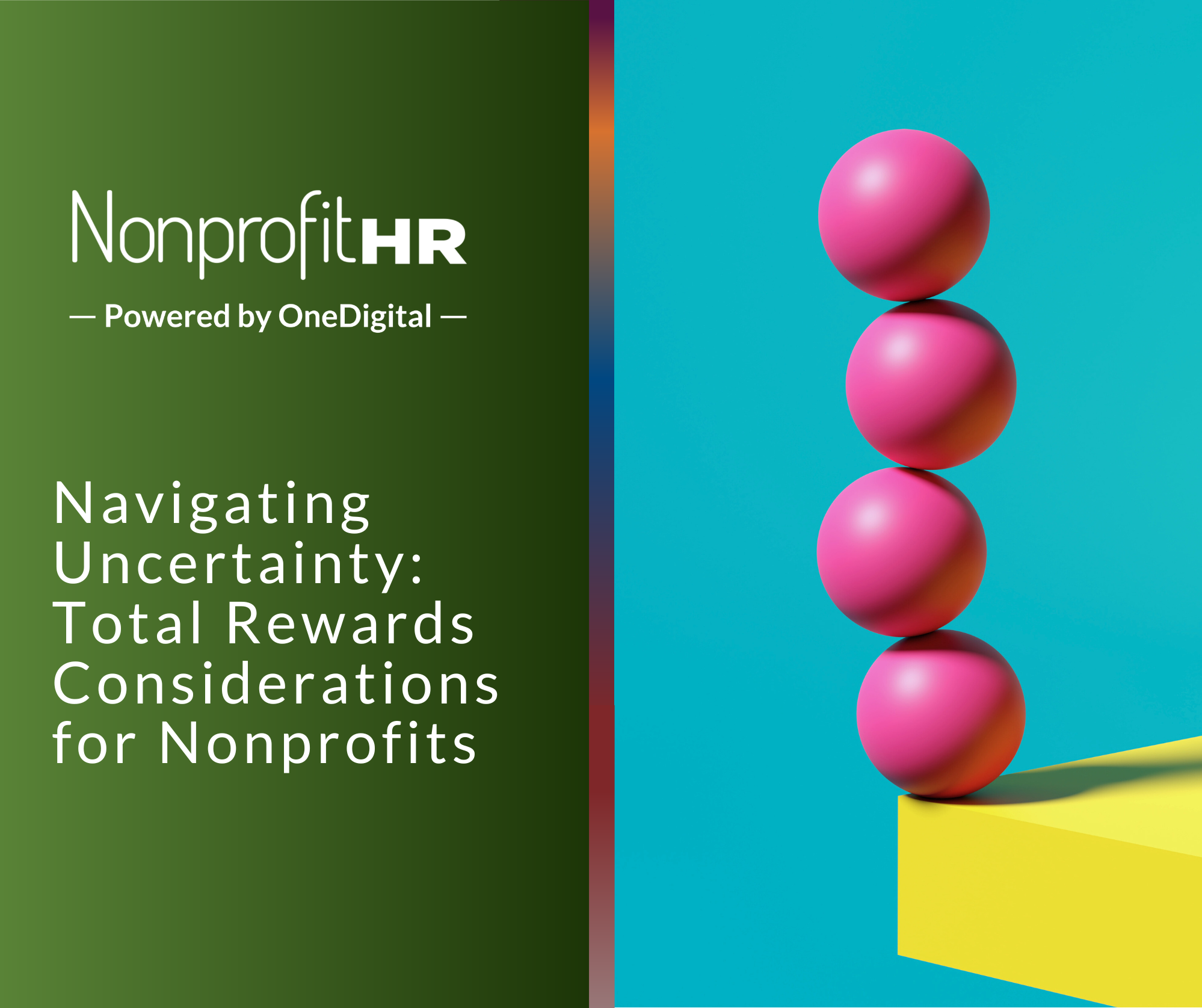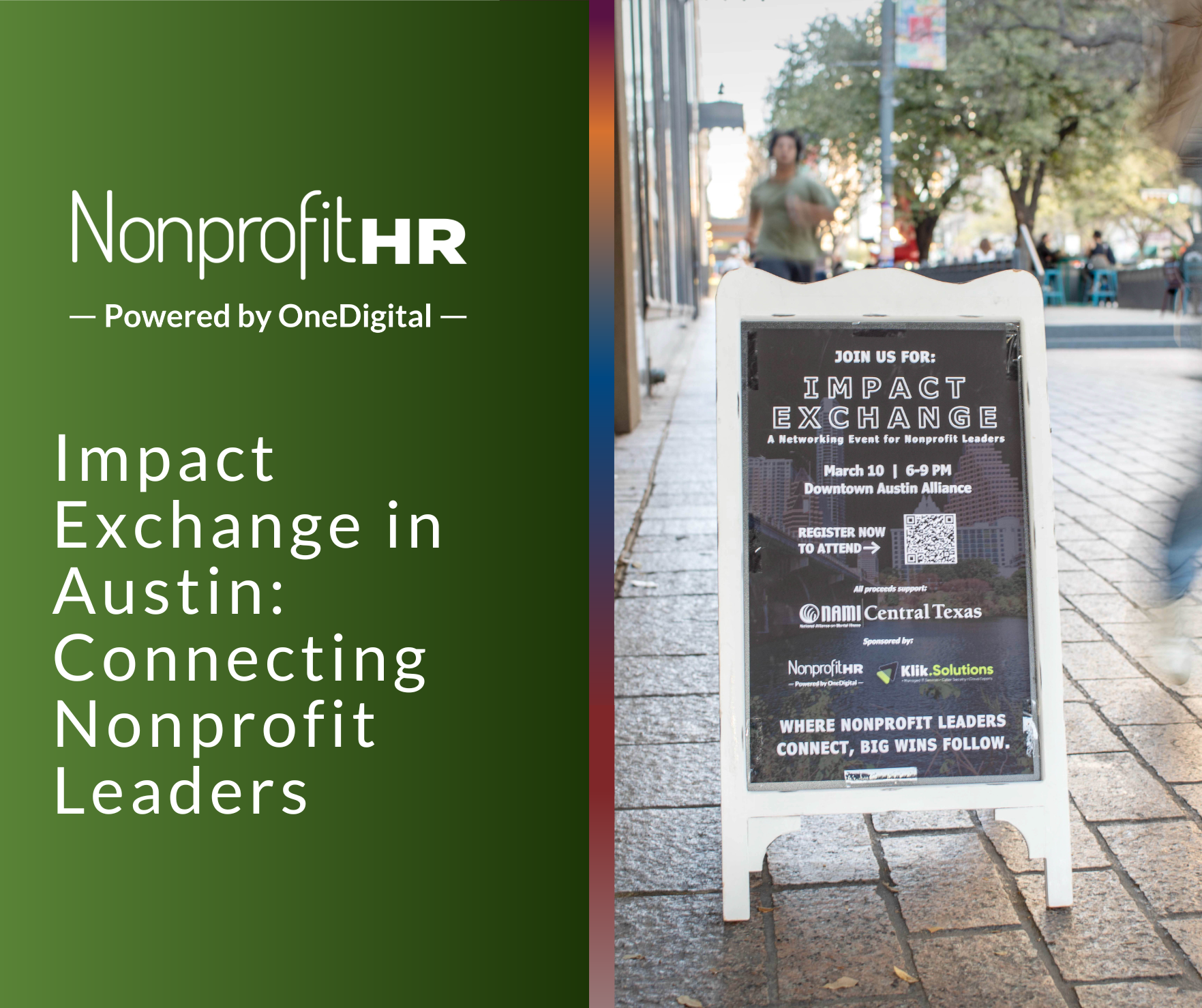WTOP: 5 ways nonprofits can…
Have you been able to catch up yet on the details of SECURE ACT 2.0 and its implications for your organization? We want to make sure you have access to all the high-level changes here in one place so that you know how to have the conversations and navigate the updates that may be required for your total rewards program.
As you know, just before the ball dropped at the close of 2022, President Biden signed an omnibus spending bill, which contained legislation that will significantly change the rules for employer-sponsored retirement plans. As an employer, you’ll want to consider the impact of these changes on your retirement plan documents and HRIT/payroll systems to ensure compliance with the new regulations.
I know what you must be thinking. Sounds like a lot, doesn’t it? The good news is that you still have some time to get ready before a significant number of the provisions within the SECURE ACT 2.0 take effect!
Let’s take a look at some of the changes that are going to be introduced into your retirement plan administration. Before we get started, it’s important to know that this article’s focus is meant to highlight some of the more substantial changes brought about by SECURE ACT 2.0. Employers will want to consult their retirement plan recordkeepers, consultants and/or ERISA counsel to ensure they’re ready to be compliant when each change below becomes effective.
Exclusions to the 10% Early Withdrawal Penalty
The penalty still exists, but this legislation phases in a handful of exclusions that will permit plan participants to take penalty-free early withdrawals for the following reasons:
- Starting this year, if a plan participant experiences a qualified disaster; a qualified birth/adoption or becomes terminally ill, the participant will likely qualify for an early withdrawal from the plan without a penalty.
- Starting in 2024, plan participants who become victims of domestic abuse get added to the list of exclusions. Additionally, plan participants will be able to take an emergency distribution of up to $1,000 with the option to repay the distribution within 3 years.
- In 2026, plan participants will be able to take penalty-free early withdrawals to pay qualifying long term care insurance premiums.
Outside of updating your plan documents, this change will likely impact your recordkeeper more directly than your HR department.
Required Minimum Distributions (RMDs)
Provision: RMDs are already likely part of your retirement plan administration. This act makes changes to when these RMDs take place. Beginning in 2023, an RMD must take place when a participant reaches the age of 73. That age bumps out to 75 beginning in 2033. Beginning in 2024, no RMDs will be required for ROTH 401(k)/403(b) participants.
Guidance: Aside from updating your plan documents, alerting your organization to upcoming RMDs largely falls to your recordkeeper. If this responsibility happens to fall within your organization, an update to your operating procedures should keep you compliant.
Catch-Up Contributions
Provisions: Beginning 2024, if plan participants earn greater than $145K annually, those catch-up contributions must be ROTH contributions. Then in 2025, for 401(k)/403(b) retirement plan participants in the age range of 60-63, the annual catch-up contribution limit increases to $10,000. This maximum contribution limit will be indexed against inflation in future years.
Guidance: This will likely require plan amendments and changes to your HRIT/payroll system in terms of configuring catch-up limits. At present, most HRIT systems that exist aren’t going to be built for different levels of catch-up contributions. If we’re lucky, these companies will update their systems to accommodate this change sometime this year in 2023. If those updates end up taking a little longer, it might require some manual handling on the employer side to allow those eligible employees to defer a higher amount of catch-up contribution when this change goes into effect.
Automatic Enrollment & Automatic Escalation
Provisions: Both of these features already exist within retirement plans today. It’s just that employers will now have the ability to design their plans to opt-in on those features if desired.
Guidance: For a lot of employers, that will remain the same. For any employers establishing a NEW 401(k)/403(b) plan (beginning in 2025), the employer will be required to have automatic enrollment into their plans at an employee contribution rate of at least 3%; and these same employers will be required to have automatic escalation of that employee contribution rate of 1% per year (capping at 15%). Plan participants will still have the ability to opt-out of these features when this requirement rolls into effect; but employers establishing these new plans at that time must allow participants 90 days to unenroll. For those employers that are establishing new plans at that time, this will likely necessitate a robust communication campaign to ensure those employees understand the auto-enrollment/escalation process and how to opt-out if desired.
Employers can Match Student Loan Payments
Provisions: Starting in 2024, employers can make matching contributions to 401(k)/403(b) for plan participants that are repaying student loan debt (vs. making elective deferral contributions into the plan).
Guidance: This would likely require a plan amendment to your retirement plan and some updates to your HRIT/payroll system but this could be a really effective recruiting tool for employers that have younger workforces still dealing with student loan debt.
Helping Part-Time Employees Become Eligible
Provision: Beginning in 2025, part-time employees that complete at least 500 hours of service for 2 consecutive years of service will be eligible to participate in 401(k)/403(b) plans.
Guidance: This would likely require a plan amendment and updates to your HRIT/payroll system if you’re using that system exclusively to determine eligibility into the plan. If your organization manually determines eligibility, it may require you to modify your procedures to ensure your compliance for part-time employees.
Creation of Retirement Benefits ‘Lost and Found’
The act calls for the creation of a Department of Labor database that individuals can search with the goal of helping locate retirement benefits from older employers. The act calls for this database to be created within 2 years of the SECURE ACT 2.0 going into effect. As such, this might mean this database will start to come online around early 2025.
The above is not a comprehensive list of all changes potentially coming to your retirement plan administration. Here is a short list of some of the additional changes brought forward by the SECURE ACT 2.0.
• Removal of the requirement to provide some types of notices to unenrolled participants (2023)
• Changes to some taxation-related items for smaller employers as an incentive for establishing retirement plans for the first time (2023)
• When individuals move to new employers, the act calls for auto portability of participant accounts into the new employer’s plan (2024)
• The threshold for automatic cashing out of plan participants’ balances increases to $7K (2024)
• Requirement of an annual paper statement to be produced and sent to plan participants (2026)
Coming up with Your Game Plan
As mentioned earlier, there are potentially a lot of changes coming down the pipeline for your retirement plan. As such, it certainly has the potential to overwhelm the individuals within your organization that are tasked with conducting your retirement plan administration. You might be feeling unsure where to start; and even WHEN to start working on a plan to incorporate these changes into your retirement plan.
If your retirement plan recordkeeper and/or other consultant hasn’t already done so, you’ll likely be receiving updates on the SECURE ACT 2.0 very soon from those trusted resources. Depending upon the type of service contract you have with your recordkeeper, you may have access to some compliance advisory services that may help guide you along as your organization begins to move into a readiness plan for becoming compliant with these changes. Start there and ask your day-to-day contact at your recordkeeper if and how they can support your organization with these changes.
If your organization happens to have a retirement plan consultant, reach out to that resource and request a meeting to begin reviewing your plan and determining an action plan for implementing the upcoming changes that will be applicable to your plan. If your organization doesn’t have a consultant on your retirement plan, it might be something that you now consider putting into place. Unless your organization has a unique service contract in place, your health/welfare benefits broker (which advises on your medical, dental, vision, etc. benefits) will usually NOT provide consultation on the retirement plan. It’s almost always carved out as a separate/different engagement. If you happen to be partnering with one of the larger brokerage firms, those firms very often will have a retirement practice available to your organization and could help you in attaining a consultant on your retirement plan.
An ERISA attorney is another resource that your organization may want to consult as you are forming your plan for implementing many of these changes. This specialty branch of legal consultation is dedicated to these specific types of laws. As a result, these attorneys will be subject matter experts in interpreting this new legislation and, more importantly, will understand which parts of that legislation will apply to your organization. ERISA attorneys are very frequently tapped to help organizations amend their plan documentation and advise on many facets of retirement plan administration.
Once you know what resources may already be available to you through your existing service relationships, it will allow you to determine if you need to procure additional resources. If that ends up being the case, you’ll need some time to complete that process. Keep in mind that many employers are going to be competing for these resources so getting started as soon as possible should help make this a less stressful experience. Sometimes one of the hardest parts of any large project is getting started. If nothing else, shoot a quick email to your recordkeeper right after you finish reading this article. Organizations that put this off or otherwise delay will likely find recordkeepers, consultants and other third-party resources becoming booked to capacity and unable to offer prompt assistance. With some immediate initiative and advance planning, your organization should be well-placed to respond to these compliance requirements.





























